507 Fit or Fat for Crufts
FIT FOR CRUFTS...OR FAT FOR CRUFTS
by David Hancock
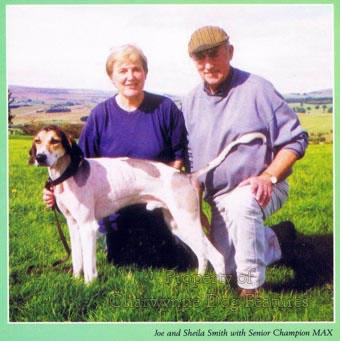 There were some very promising young exhibits at Crufts in 2006 and it’s good to see so many good younger breeders making their mark. But what was not good to see was the high number of disturbingly unfit exhibits. Working and Pastoral breeds especially move quite differently when they are truly fit, there is a spring in their step and that purposeful gait so desired in those breeds. Unfit undermuscled exhibits in the bigger heavier breeds waddle; there seems to be an especially cumbersome ungainly torso-carriage which the strapping breeds display when overweight or lacking in muscle power. It is most unattractive and will often prevent even a good dog from winning. A really good powerfully-built dog, when unfit and therefore in poor muscular condition looks, and certainly moves, like an inferior dog. Unfit undermuscled exhibits in any class, especially when this is accompanied by ugly movement, devalue any breed. This seems to be detected more by knowledgeable all-round judges; so many breed judges seem to have gone to sleep as far as show condition is concerned.
There were some very promising young exhibits at Crufts in 2006 and it’s good to see so many good younger breeders making their mark. But what was not good to see was the high number of disturbingly unfit exhibits. Working and Pastoral breeds especially move quite differently when they are truly fit, there is a spring in their step and that purposeful gait so desired in those breeds. Unfit undermuscled exhibits in the bigger heavier breeds waddle; there seems to be an especially cumbersome ungainly torso-carriage which the strapping breeds display when overweight or lacking in muscle power. It is most unattractive and will often prevent even a good dog from winning. A really good powerfully-built dog, when unfit and therefore in poor muscular condition looks, and certainly moves, like an inferior dog. Unfit undermuscled exhibits in any class, especially when this is accompanied by ugly movement, devalue any breed. This seems to be detected more by knowledgeable all-round judges; so many breed judges seem to have gone to sleep as far as show condition is concerned. 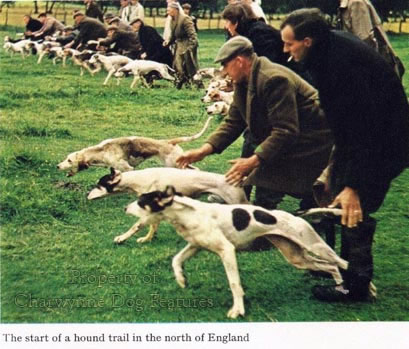
It is fair to state, I believe, that the fittest dogs in Britain are the hounds of the packs, trail hounds, coursing and racing Greyhounds and working sheepdogs. A Staffordshire Bull Terrier exhibitor recently told me that he felt unable to produce his dogs in tip-top condition in case someone thought they were being trained for fighting! A recent show critique on St Bernards stated that "almost all of the Saints shown to me were too fat". For such a large breed to be so noticeably overweight is a form of indirect cruelty. Soon, obesity will cause more premature deaths in dogs than any other cause; is that not a form of cruelty demanding campaigns by animal charities? A survey a few years ago found that 52% of dogs in Britain were overweight and that 10% were more than 25% overweight. One Afghan Hound weighed as much as two normal Afghans. Veterinary surgeons warn us that the major threat to the long life and quality of life of dogs in this new century is posed by obesity, created partly by over or inappropriate feeding but mainly by lack of exercise. This is indirect cruelty on a grand scale. 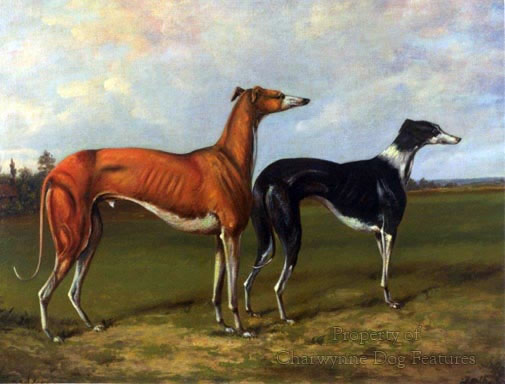
I see fat dogs in far too many show rings--and they sometimes win prizes! In her Showing and Judging Dogs (Gifford, 1977), Hilary Harmer writes: "...unfortunately, very few show dogs are adequately exercised….” This is something surely for the organisation dedicated to the improvement of dogs, our Kennel Club, to confront head-on. I believe it is now more common than when the highly experienced Hilary Harmer produced her conclusion. Is it not time for any obese exhibit to be sent from the ring? In this connection the judges' critiques from Crufts each year , are illuminating. Here is one from the 2002 event: Dandie Dinmont Terriers..."I was amazed how many were overweight and just not in show condition..." And three from the year before: German Shepherd Dogs..."quite a few weak pasterns. Feet are atrocious…...moved so unsound at the back, they lacked firmness of muscle….” Deerhounds.… “some were lacking muscle and I found some very poor feet. ….” Whippet…..”Far too many overweight exhibits.…..” And the judges of the year before that reported: Labrador bitches….. “I had two overall concerns which affected my decisions, excess weight and movement.….” Labrador dogs (different judge)….”not being helped by excess weight that a number of exhibits carried on their fronts.. ..”
At the 2005 Crufts, this judge's comment was made on Pyrenean Mountain Dogs – “There was a total lack of condition in some dogs, many were grossly overweight, so obvious when moving and they paid the penalty.” Those last four words are important. What really is the sense in exhibiting a good dog, when its condition ensures that it can't win? The year before at Crufts, both the Vizsla and the Weimaraner judges reported on how many of the entry lacked muscle tone. How many of the dogs put before them went cardless because of their condition? Where is the sense of allowing your dog to be under-rated because you haven't got it fit enough?
For comments like this to be passed by top judges on top exhibits is alarming. The Kennel Club tell us that this canine showcase displays 'the best of the very best' .How can the flab be fought when our top show is for unfit dogs and our leading animal charity has it in for fit dogs? The Kennel Club could lead the way by advising judges to omit from their deliberations any exhibit not in show condition, with obesity a disqualifying fault. In his admirable The Practical Guide to Showing Dogs (Popular Dogs, 1956), Capt R Portman-Graham wrote: “II am convinced that in pre-war days any favourable comments passed on my dogs' fronts could be attributed to the systematic special exercises they were given in order to develop their muscles naturally...!”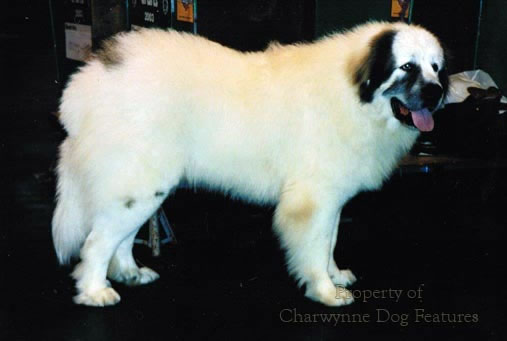
The writer was clearly dedicated to the improvement of his dogs; his past work should now be overtly supported by the Kennel Club with a clear statement on overweight exhibits at shows licensed by them. It is not good enough to hide behind judges, the top body in the world of pure-bred dogs should set out its stall. Under-exercised overweight dogs should not even be considered by show ring judges. This would have an enormous effect on exhibitors and do an enormous amount of good for the healthier dog movement. 
With fat dogs appearing at Crufts , how do we campaign against the most widespread threat to dogs --obesity? Appeal to the dog food manufacturers? I don't think so. Appeal to the owners? Unrewarding, in my experience. Killing by kindness is not an emotive issue; it is probably condoned by the morally vain. Involve the veterinary profession? Not if the food being sold in so many surgeries these days is anything to go by. Educate the future generations? They are struggling with obesity themselves if the high street is any indicator.
In our allegedly more compassionate society, when any dog capable of hunting, pointing or retrieving has been put down, together with any breed or type resembling a fit Bull Terrier, and pastoral dogs are unemployed, how will anyone know what a fit dog actually looks like? At the moment few judges, and even fewer exhibitors, at shows, seem to know what hard condition, muscular development and sound movement really is. The link between the three escapes them. I once thought that shamelessness was the reason behind unfit dogs in the ring; now it is probably more due to ignorance. One day soon it will due to innocence; no one will know what a really fit dog looks like. This is very bad news for the domestic dog. 
One of my great joys in life is to see a working dog in action, coat gleaming, muscles rippling, eyes bright and feet tight. For me a beautiful dog is not one standing but one moving. A supremely fit, soundly constructed dog puts little stress on its joints, expends energy economically and performs highly efficiently in its locomotion. It makes less demand on its heart and lungs. It enjoys a higher quality of life and a longer life. A well-exercised dog usually means a well- exercised owner, an additional benefit. Over-use of the car may account for packed doctors' waiting rooms; it is becoming a cause of crowded vets' waiting rooms too. 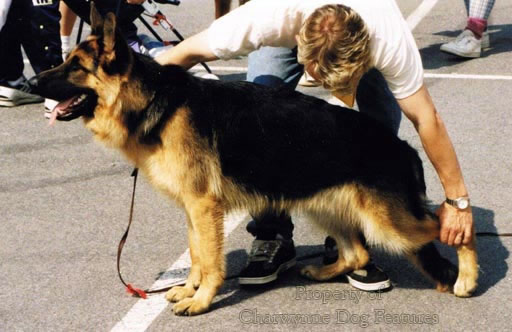
But we all have apart to play in any campaign against canine obesity. Writers can extol fitness and condemn fatness. Vets can advise on diet, whatever the loss in turnover. Food manufacturers can be lobbied by the dog press to promote healthier eating. The Kennel Club could give the highest priority to show condition and make obesity a disqualifying fault. Judges could throw overweight exhibits out of the ring. Any self-respecting houndshow judge would react strongly if a fat hound was offered for his inspection. Conformation dog shows sprang from houndshows and should honour that heritage.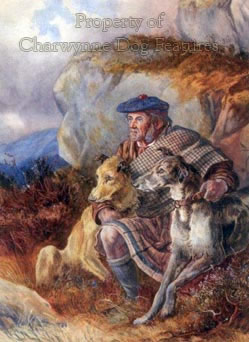
A more affluent society should mean better cared for pets not under-exercised overfed shorter-lived ones. Just as the sporting dog is under unprecedented threat from the morally vain, so is the domestic pet from unenlightened owners who need waking up. A decade ago when I collected my young Bullmastiffs from a weekend in kennels, the proprietor told me that unusually he had another dog of this breed as a boarder. But when he pointed it out to me, I was appalled; the wretched dog was a good two stones overweight. When I expressed my disapproval the proprietor sighed and said that he had pointed this out to the dog's owner, who had replied, with discernible resentment: "I like him like that!"
Callous selfish thoughtless dog-owners like that don't deserve the loyalty and selfless companionship of a dog. It is that kind of unfeeling indirect cruelty which has to be countered. But if hard-muscled super-fit Staffies are not to be admired, if the entry at the showcase of Crufts happily displays obesity and the owners of fat pets are not condemned, we are undermining all the work of our predecessors in handing on superlative animals for our care. We should be eternally grateful, in this mean and nasty world, that we have the well- being of such admirable creatures as dogs, even available to us. It is perhaps a matter of honour. In times when the old expression 'as fat as a butcher's dog' has been craftily recast as 'as fit as a butcher's dog', we should ensure that we at least know the difference. Fit must never be replaced by fat!